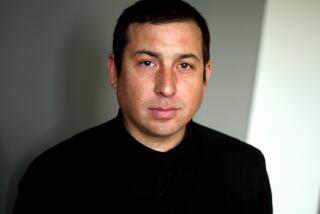ORANGE COUNTY PERSPECTIVE : Ethnic Literature: Preserving the Past, Uniting Us Today and in Future
- Share via
A good part of Chapter XVIII in Richard Henry Dana’s “Two Years Before the Mast” takes place in the harbor that now bears his name. Here, in 1835, Dana describes the sailors collecting the cured hides from the mission at San Juan Capistrano and sailing them off the bluffs, like giant Frisbees, to their ship below.
Dana should stand on the bluff now--if he can find a parking place!--and witness the scene below: millions of dollars worth of pleasure craft packed into the Dana Point Harbor, a replica of his own little Pilgrim lying at anchor.
“Two Years Before the Mast” is larded with such descriptions of our coast. Southland teachers should require chapters from Dana, among similar works, for the book gives us back our history. It shows us what Orange County was like more than 150 years ago, and what our coastline resembled in its original state.
So much of our energy these days is devoted to saving that coastline, as our cities crowd the shore. But what about the coastline of our minds, of our own history? A book like Dana’s is one vessel where our geography, like our history, is preserved, but it is only one of many we could use.
Today, ethnic literature probably preserves our past better than any other literary form, for it gives us our cultural history in all its richness and variety. Teaching our students Asian-American or Latino or black or Native American literature, we are helping to preserve a culture that we share but that, like Dana’s coastline, we are constantly in danger of losing.
An example? Rudolfo Anaya’s “Bless Me, Ultima” (1972) is one of the best novels to explore the roots of Mexican-American culture in the Southwest. (Tony Hillerman’s novels do the same for the Native American cultures). And Sandra Cisneros’ “The House on Mango Street” (1983) describes a young Latino woman’s difficult urban life.
One strength of our multicultural heritage is that it actually transcends any geographical boundaries. Toni Morrison’s novel “Song of Solomon” (1977) is the history of blacks in this century, and their migration from the South to the North. Louise Erdrich’s novels are all set in the Midwest, but their real geography is the history of Native Americans, and the clashes between Indian and white cultures. Yet her novels also confront the clashes between generations that define so many families, minority and mainstream.
The rationale for teaching these works: We need to read ethnic literature for the same reason we need to read Dana: to help preserve our cultural history. In a day when incidents of sexual and racial violence are increasing on campuses--when our differences are being attacked--it becomes increasingly important to try to sensitize ourselves and our students to our similarities, to the tapestry of the culture that we share, as well as to the diverse strands that are woven into it.
Racism can be overcome by recognizing the unique roles that various ethnic groups have played in our history, and at the very same moment recognizing how we are bound together in that history.
More to Read
Sign up for our Book Club newsletter
Get the latest news, events and more from the Los Angeles Times Book Club, and help us get L.A. reading and talking.
You may occasionally receive promotional content from the Los Angeles Times.







